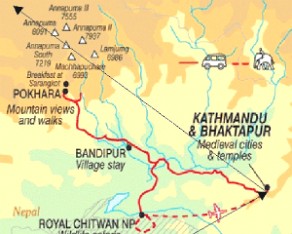
1 TO REMOVE CAPTIONS USE HIDE INFO BUTTON.
This is a wonderful tour of the varied areas of the mountainous Kingdom of Nepal. From the city life of Kathmandu to the quiet seldom visited village of Bandipur (my Shangri-La) to the beautiful mountain town of Pokhara at the foothills of the Himalayas to an elephant safari in the jungles of Chitwan. And much more - this country has something for everyone.
This is a wonderful tour of the varied areas of the mountainous Kingdom of Nepal. From the city life of Kathmandu to the quiet seldom visited village of Bandipur (my Shangri-La) to the beautiful mountain town of Pokhara at the foothills of the Himalayas to an elephant safari in the jungles of Chitwan. And much more - this country has something for everyone.

2 This is a wonderful tour of the varied areas of the mountainous Kingdom of Nepal. From the city life of Kathmandu to the quiet seldom visited village of Bandipur (my Shangri-La) to the beautiful mountain town of Pokhara at the foothills of the Himalayas to an elephant safari in the jungles of Chitwan. And much more - this country has something for everyone.
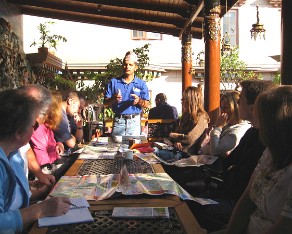
3 This is an adventure tour with others. In the morning a short orientation by our tour guide Hari and we get to meet the group of nine others all from the UK. I enjoy UK tours as they are usually adventurous with less emphasis on comfort and more emphasis on seeing the unusual and living with the people to get an understanding of the country.
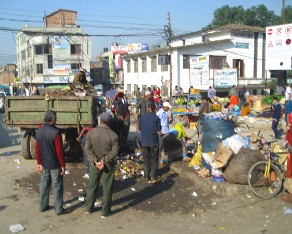
4 We start with a tour of the old city with narrow streets and alleyways. The garbage collectors are on strike.
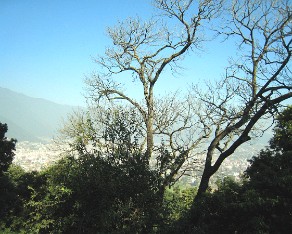
6 There are great views of the city below as we climb to the top of this pilgrimage site. According to Swayambhu Purana, the entire valley was once filled with an enormous lake, out of which grew a lotus. The valley came to be known as Swayambhu, meaning "Self-Created." The name comes from and eternal self-existent flame (svyambhu) over which a supa was later built.
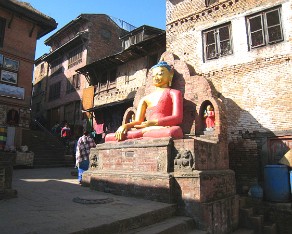
7 First sight at the top is a great Buddha. The Bodhisatva Manjushri had a vision of the lotus at Swayambhu and traveled there to worship it. Seeing that the valley can be good settlement and to make the site more accessible to human pilgrims, Manjushri cut a gorge at Chovar. The water drained out of the lake, leaving the valley in which Kathmandu now lies.
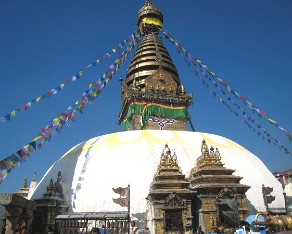
8 The temple at Swayambhunath is lovely with prayer flags. Although the site is considered Buddhist, the place is revered by both Buddhists and Hindus. Numerous Hindu kings are known to have paid their homage to the temple including the most powerful king of Kantipur- Pratap Malla.
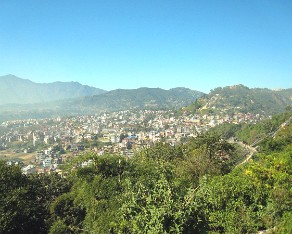
10 Again, beautiful views of the city and the blue sky is a delight. On our stay in India we did not see blue sky because India is mostly low land covered in haze and pollution.
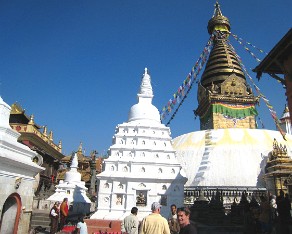
11 A last view of The temple at Swayumbhunath and we are off to the city of Bhakapur via visits to Dhulikhel then to Namo Buddha. Bock on the road to Dhulikhel.

12 We arrive in Dhulikhel. Dhulikhel is a typical Newari town with nearby Tamang villages. It is situated 30 km. east of Kathmandu on the side of Arniko Highway on the way towards Tibet. Dhulikhel is popular for its natural beauty and ancient traditions. The Himalayan ranges from the twin crest of Mt. Langtang in the west to the Mt. Everest in the east can be clearly viewed in a clear day.

15 Back n the road and we stop at Namo Buddha. Better know by Tibetans as Tag-mo Lu-jin. This means the place where the Buddha offered his body to the hungry mother tigress. It is renowned for Shakyamuni's act of compassion upon encountering a hungry mother tigress he offered her his body so that she could feed her cubs. There are a couple monasteries and one ancient stupa erected nearby in which one can make offerings, pray, and light butter lamps.
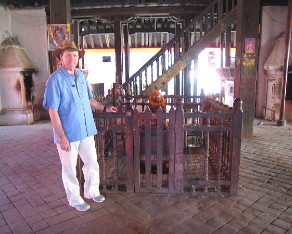
16 Inside Namo Buddha temple. Namo Buddha is better know by Tibetans as Tag-mo Lu-jin. This means the place where the Buddha offered his body to the hungry mother tigress. It is renowned for Shakyamuni's act of compassion upon encountering a hungry mother tigress he offered her his body so that she could feed her cubs.
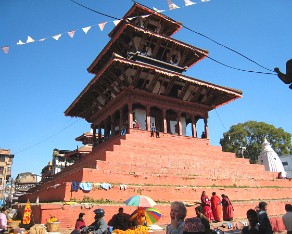
17 Namo Buddha temple. Legend has it that due to superstition the name, which traslates as *Hail to the Buddha* should never be uttered.

19 This is the temple where the current Kumari lives. The Kumari is a living goddess that is brought to the temple as a young child after a lengthy selection process. We were lucky enough to catch a glimpse of her as she made herself visible to the crowd below. We were unable to get her in this picture.
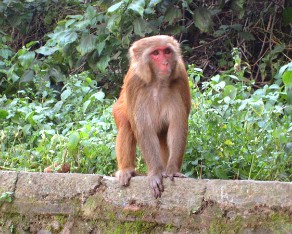
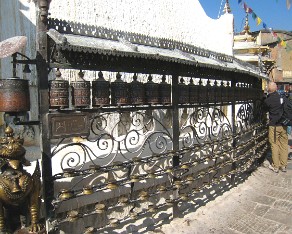
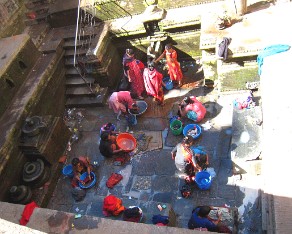
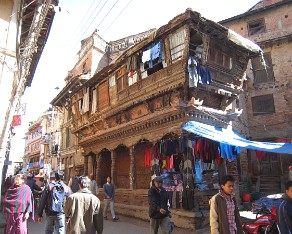
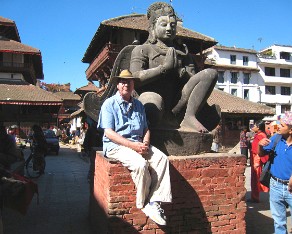
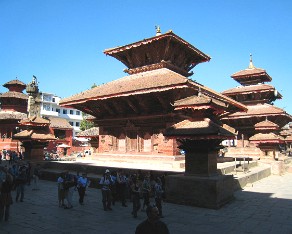
Home ---- TRIP: Nepal 2007
TO RETURN "HOME" to TripPics.us: Click the BLUE "UP" arrows.